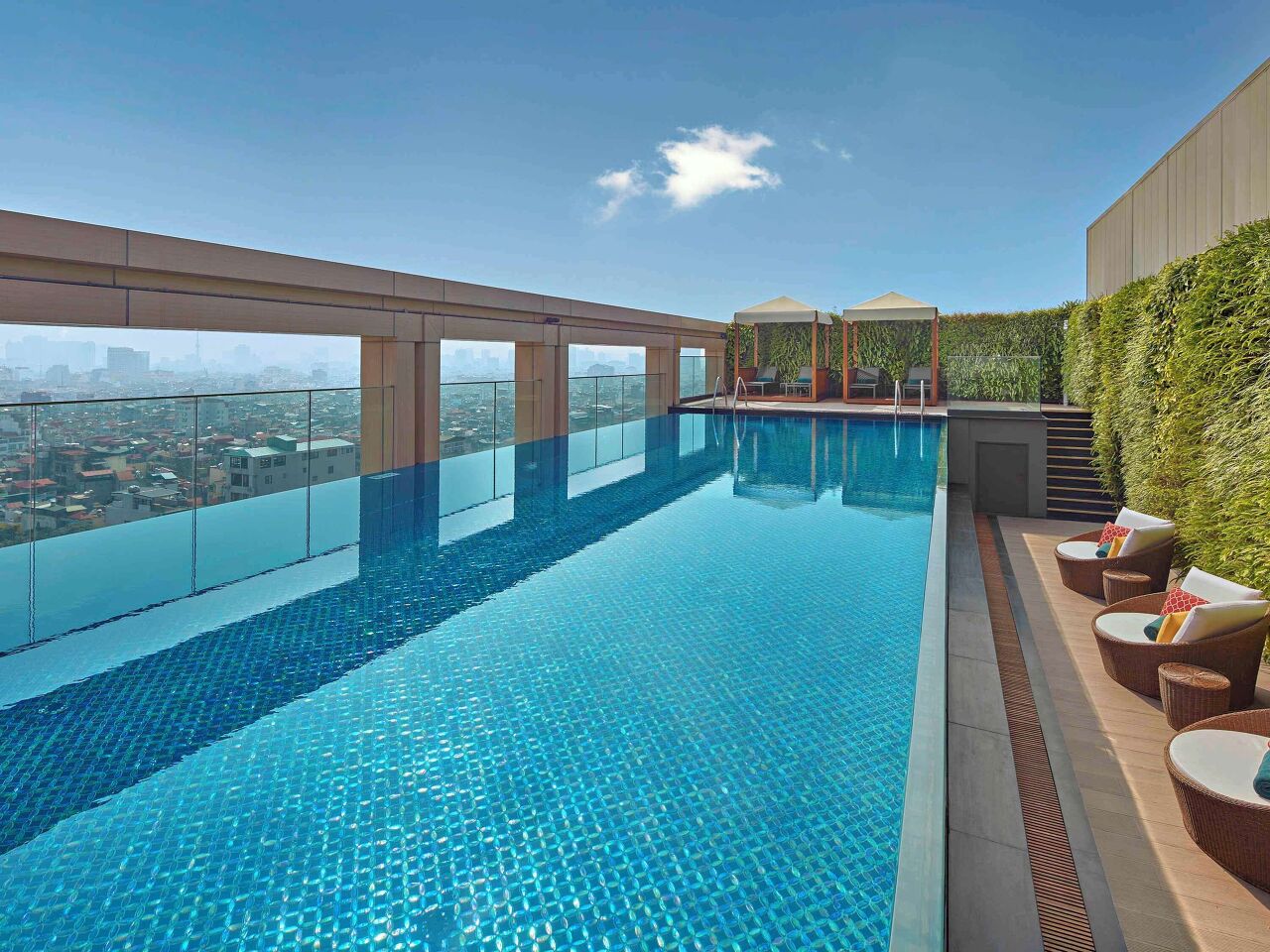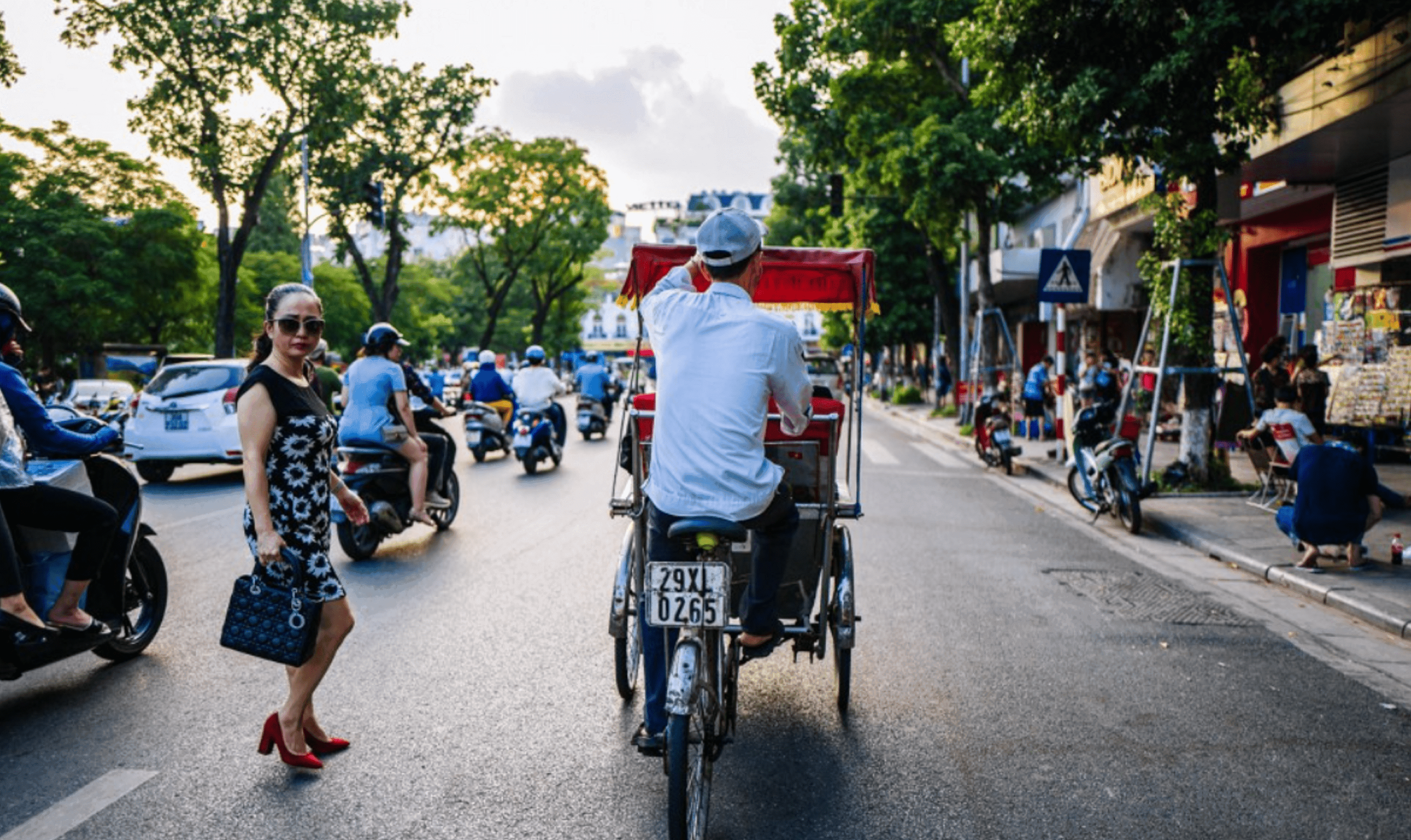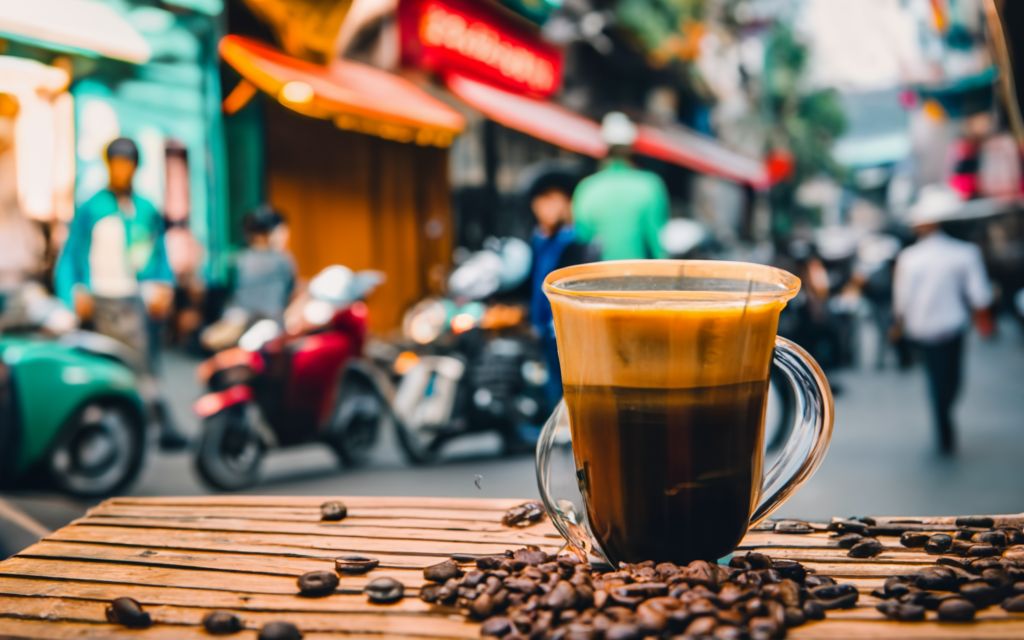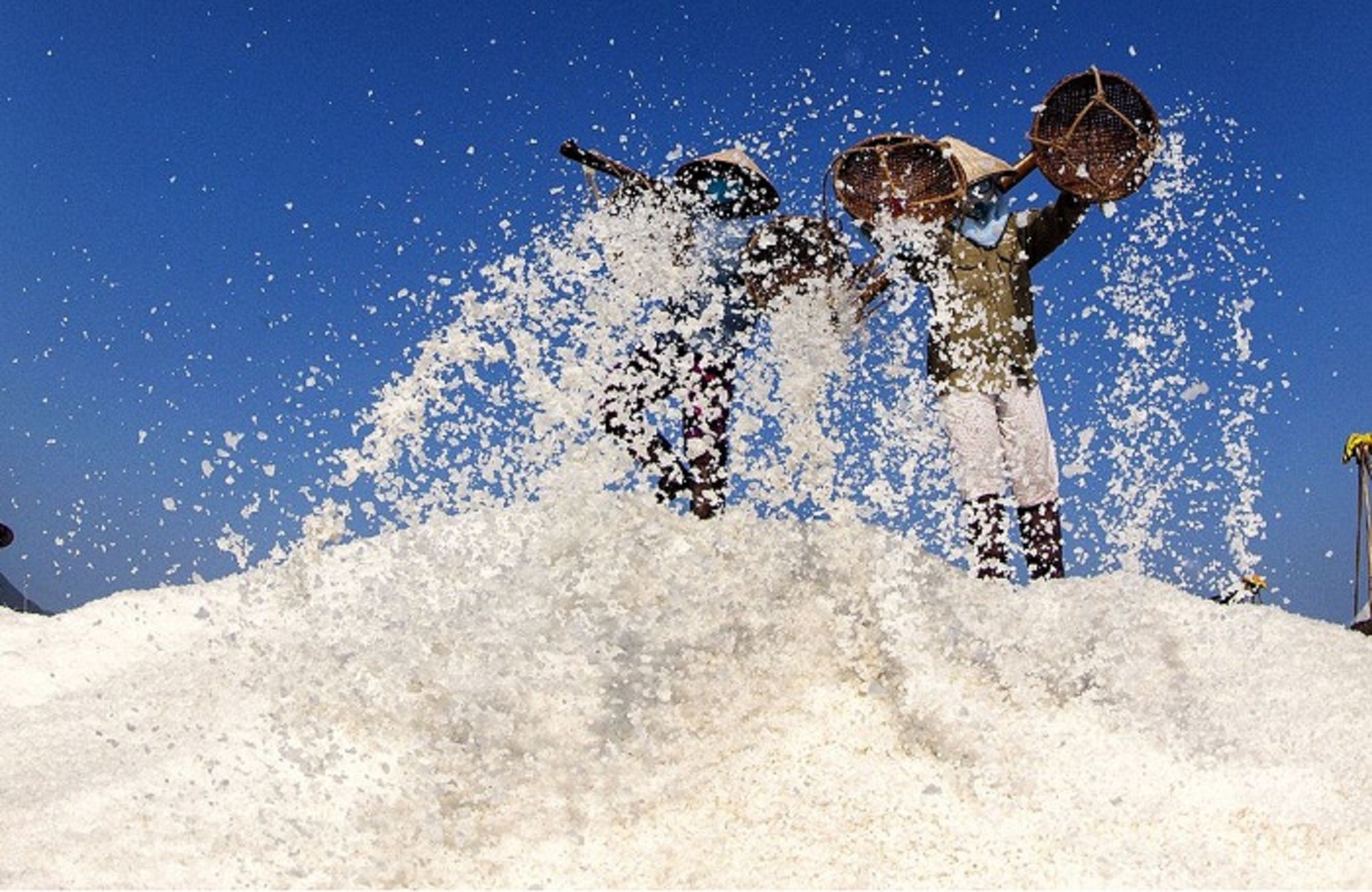Best time weather to visit Vietnam
Culture
3 minutes
Mar 5, 2024
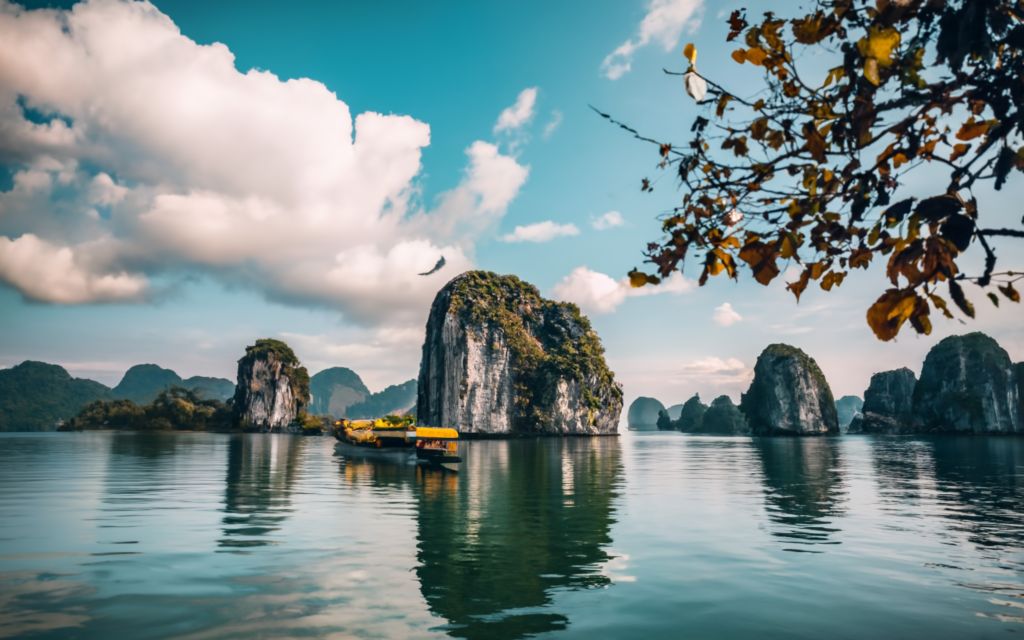
The best weather and timing to visit Vietnam vary tremendously depending on the north and south. Be prepared for the weather depending on where you want to spend most of your time.
Season

High season (June-July)
The peak season for traveling to Vietnam is usually June and July. Although it is the peak season for Dutch people due to the vacation, the current vacation in Vietnam also overlaps. Prepare crowded airports and maturing flights, especially if you plan to explore more of Southeast Asia while you are there. If you want to travel cheaply, this time and Lunar New Year (early February) may not be the best time to visit Vietnam. A last-minute search shows that many hotels and flights are fully booked. It is best to plan ahead so that you can buy flights and accommodations cheaply because there are many people on the move.
Off-season (September to October)
Airfares to Vietnam are the cheapest time. Not only can you save a lot of tickets, but the crowds decrease during your vacation!
Rain season
Like most destinations, you can enjoy Vietnam during the monsoon season (April to October), but there are some reservations. During the rainy season, you'll encounter fewer travelers and more mosquitoes. Better accommodation price negotiations become easier, and tours can become cheaper, but outdoor activities become a soaking experience. Transportation delays occur. During prolonged downpours, the bus may not run, as roads may become flooded, making it more dangerous to drive.
Typhoon season
Although nature does not always go back to normal, hurricane season usually ends around December every year. The start date varies depending on which part of northern, central, or southern Vietnam. August to November and October are typically the most stormy months.
When is the rice paddies most beautiful?
If you have dreamed of seeing a beautiful golden rice field, be punctual. The harvest season only lasts for one month! Vietnam has beautiful rice fields in many places in the countryside from north to south.
Stepped rice fields in mountainous northern Vietnam are best colored in late September and October when the harvest season begins.
Best time to visit Central Vietnam
Winter and summer are clear in North Vietnam (Hanoi, Ha Long Bay, Sapa, Maizhou, and Ninhbin). Cool but mostly dry winters last from November to April, with an average temperature of 17-22°C and the coldest months being January to March. Summer lasts from May to October, when it is hot, humid, and has the highest rainfall. July to September is often the wettest month of the year.
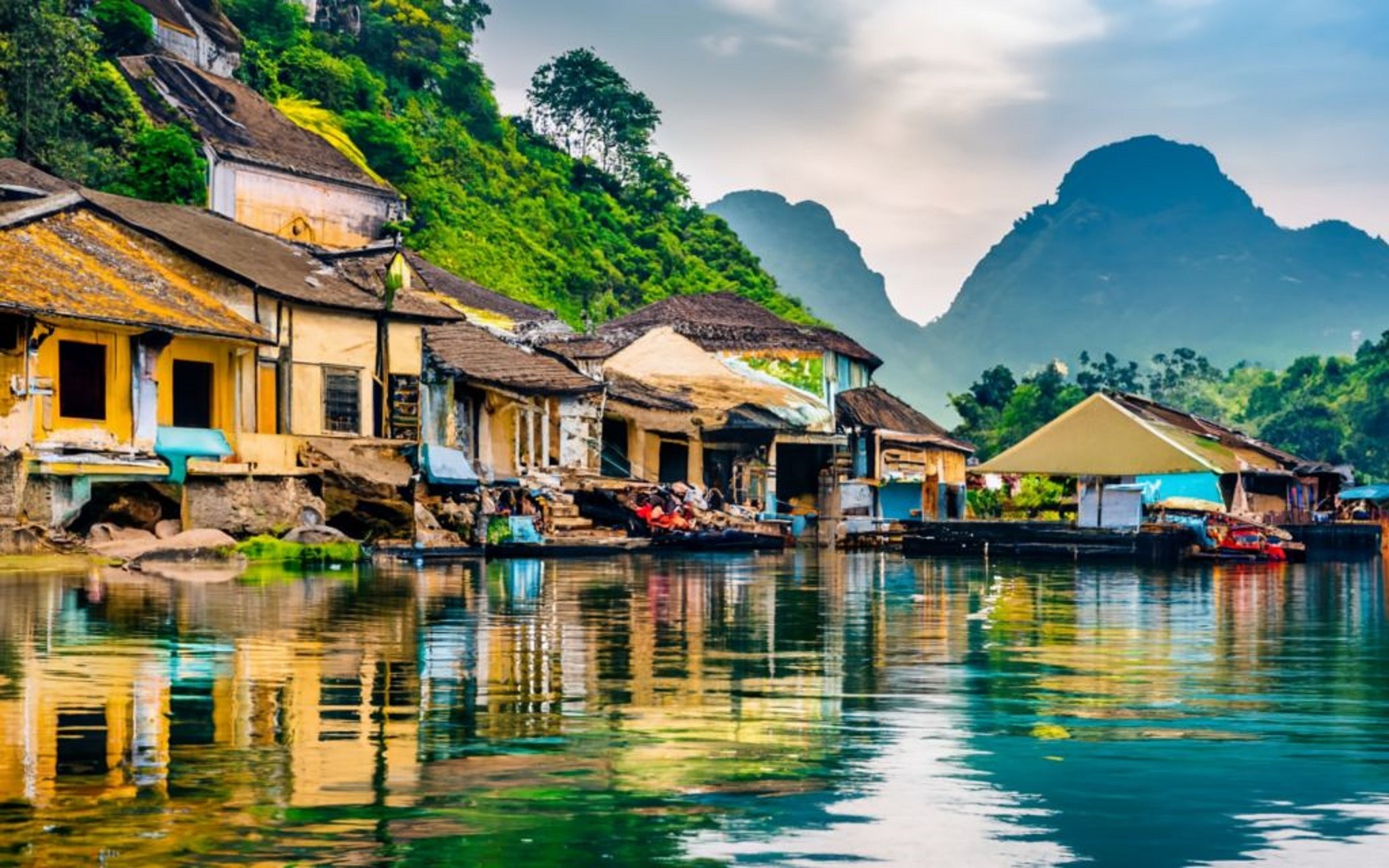
January: Average temperature (17℃), Rain per month (18mm)
February: Average temperature (18°C), Rain per month (28 mm)
March: Average temperature (20℃) Rain per month (38mm)
April: Average temperature (24°C) Rain per month (81 mm)
May: Average temperature (28°C) Rain per month (187 mm)
June: Average temperature (30℃) Rain per month (238mm)
July: Average temperature (30℃) Rain per month (322mm)
August: Average temperature (29°C) Rain per month (343 mm)
September: Average temperature (28°C) Rain per month (252 mm)
October: Average temperature (26°C) Rain per month (98 mm)
November: Average temperature (22°C) Rain per month (42 mm)
December: Average temperature (19°C) Rain per month (21 mm)
Best time to visit Central Vietnam
Central Vietnam (Hoian, Da Nang, and Hu) has warm and dry weather from mid-January to late August, with temperatures often reaching the mid-30s. During the winter, rainfall increases with peak levels in October and November, sometimes in the form of typhoons.
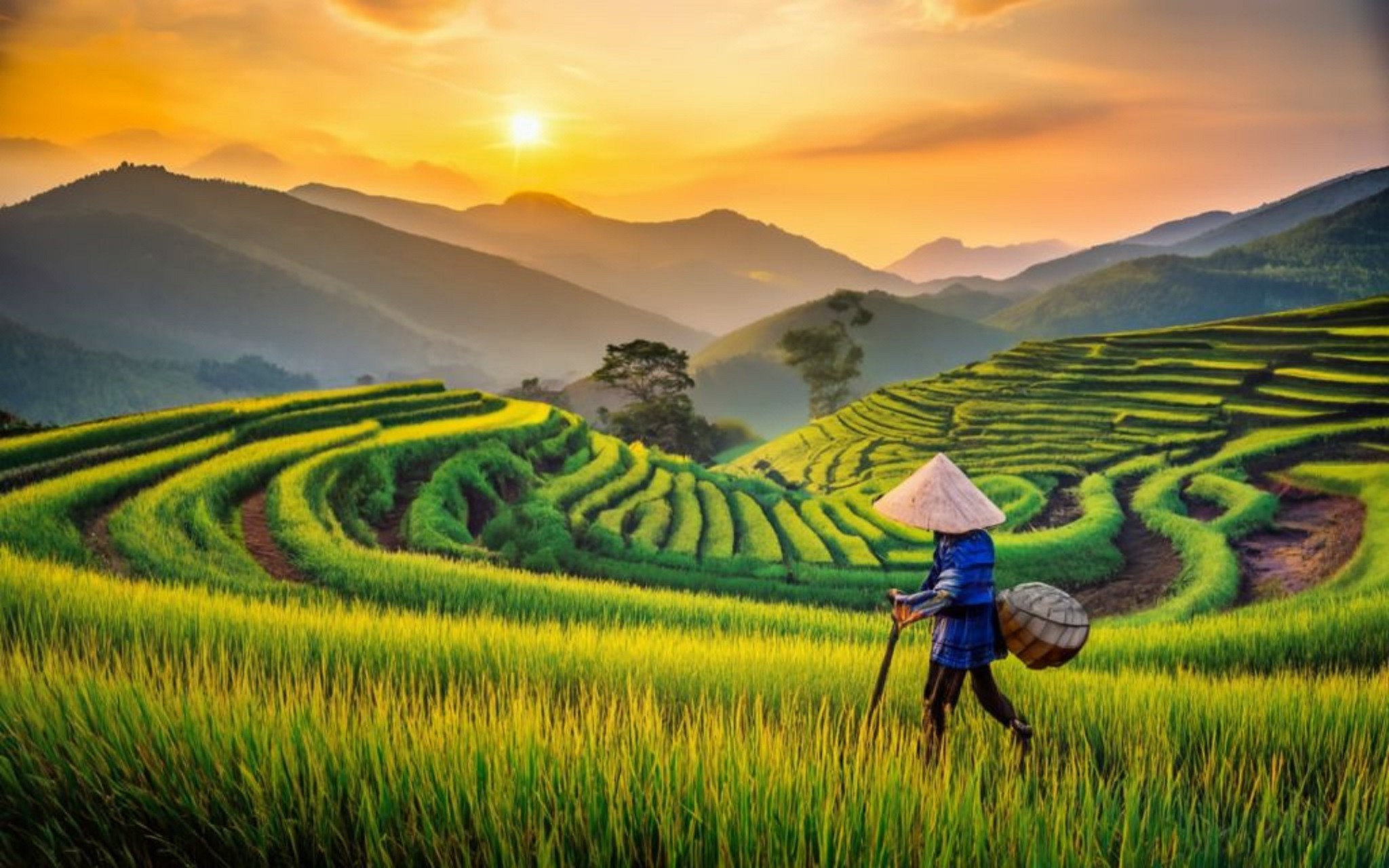
January: Average temperature (22ºC), Rain per month (101 mm)
February: Average temperature(22ºC), Rain per month (31mm)
March Average temperature(24ºC) , Rain per month(12mm)
April: Average temperature(27ºC) , Rain per month(18mm)
May Average temperature(29ºC), Rain per month(47mm)
June: Average temperature(30ºC), Rain per month(42mm)
July: Average temperature(30ºC), Rain per month(99mm)
August: Average temperature(28ºC), Rain per month(117mm)
September: Average temperature(26ºC), Rain per month(447mm)
October: Average temperature(24ºC) , Rain per month(530mm)
November: Average temperature(22ºC), Rain per month(221mm)
December: Average temperature(21ºC), Rain per month(208mm)
Best time to visit South Vietnam
The climate in the south (Ho Chi Minh City, the Mekong Delta, Muyne, and Phu Quoc), where temperatures remain constant throughout the year, is divided into two seasons: the rainy season and the dry season. The dry season starts in November and ends in April/early May, and it is a little warmer and wetter from late February to May. The rainy season lasts from May to early November, and June, July, and August receive the heaviest rains of the year.
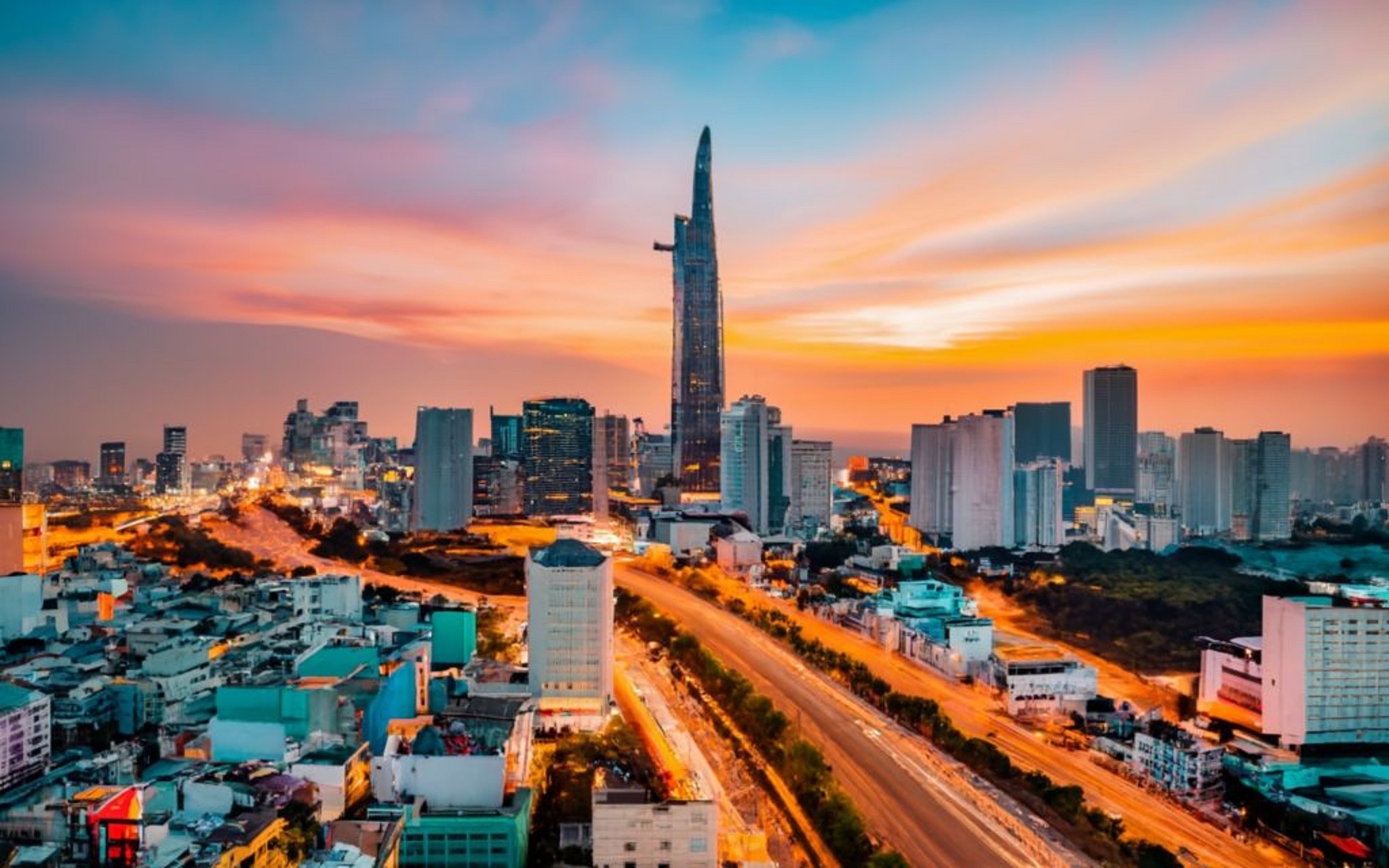
January: Average temperature(27°C), Rain per month(15mm)
February: Average temperature(28°C), Rain per month(4mm)
March: Average temperature(29°C), Rain per month(13mm)
April: Average temperature(30°C), Rain per month(42mm)
May: Average temperature(29°C), Rain per month(221mm)
June: Average temperature(29°C), Rain per month(331mm)
July: Average temperature(29°C), Rain per month(314mm)
August: Average temperature(28°C), Rain per month(268mm)
September: Average temperature(27°C), Rain per month(334mm)
October: Average temperature(27°C), Rain per month(268mm)
November: Average temperature(27°C), Rain per month(114mm)
December: Average temperature(27°C), Rain per month(56mm)
Monthly weather
Check the weather every month to see what you can expect when you're in Vietnam. Keep in mind that the explanation below is an estimate of what you can expect in Vietnam, because in reality, the rainy season can start later or earlier and last longer or shorter. You can also read more about the monthly holidays and events in Vietnam.
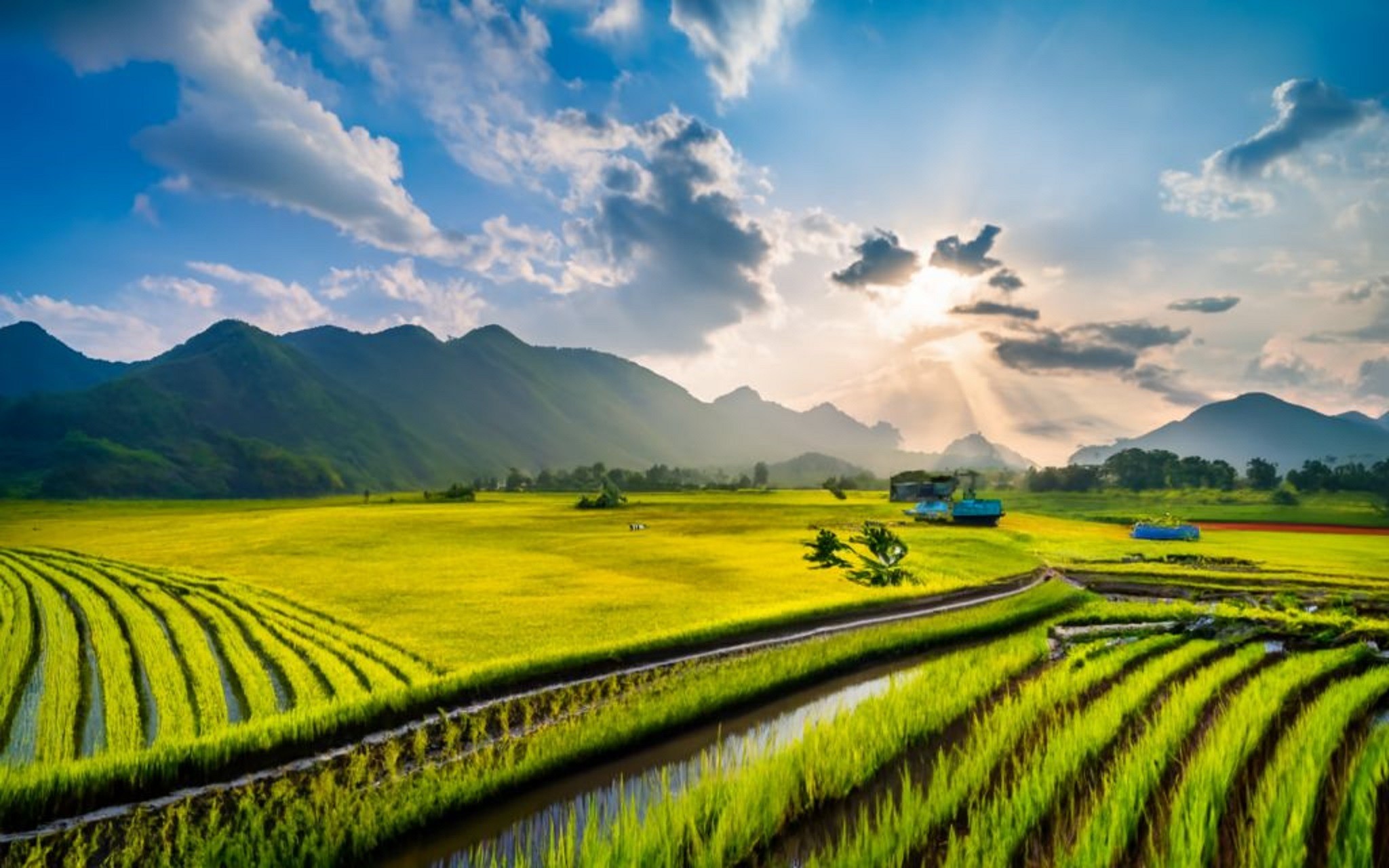
January
During this time of year, you can enjoy the dry and pleasant weather in most areas except the northern part of the country. Temperatures in this area can drop drastically, and it feels much cooler, especially in the morning and late evening. This is especially the case with Sapa and Ha Giang. For the best beach weather, you should head to Phu Quoc, where sunlight is guaranteed. It's a good idea to know that during this time of year, Ha Long Bay is quite cloudy, so you may not get the best view.
February
The cold morning chill will disappear in the northern part of the country, and hot and dry weather is expected for most parts of the country. North Vietnam remains an exception and feels colder. The good thing to know is that most shops, museums, and restaurants will be closed for about a week during the trip in February, during TET (Lunar New Year, Vietnam).
March
It is the peak season for traveling to Vietnam and the best time to visit. Now beachgoers can choose better destinations, such as Muyne, Condao, and Nha Trang, which have nice weather. Hoian is also famous for being a great beach resort at the end of the month. Now is the best time to visit Ha Long Bay, where clear and blue skies should spread out without fog.
April
Like March, April is the best time to travel around the country and you can see more crowds everywhere with fantastic weather.
May
Increasingly hot May offers a golden opportunity to miss out on peak April prices. Rain is yet to come, but showers are expected in the north and south later this month.
June
Although the north and south can receive occasional rain, Hanoi, Mai Tzu, and Ha Long will probably see clear, blue skies most of the time. The best place is Central Vietnam, where the sun still shines. It is expected to rain very little in Lang Co, and Hoi An is a beautiful beach resort. Take some off-season chances before the vacation begins next month.
July
Central Vietnam is the best place to have hours of sunshine and little rain. The rest of Vietnam is likely to get some showers, but not enough to affect the enjoyment.
August
Central Vietnam is the best place to visit at this time of year, but if it's okay with the occasional rain, the rest of the country is still worth visiting. Flights can be more expensive, but during the off-season in Vietnam, hotels offer great promotions.
September
Enjoy the last sun off the central coast of Vietnam before it rains more often at the end of the month. The north and south are typically very humid at this time of the year, but hotels are affordable.
October
The sun is returning to the north of the country, and now is a good time to go to Sapa or take a deserted road in Ha Giang. Although this is not the best time to have a beach vacation, Vietnam has so much more to offer, so traveling in October can avoid crowds.
November
The peak season is starting again and many people head to Vietnam for the cold winter in the north. The whole country will be mostly hot and dry at the end of the month, but showers are possible in the central part of the country.
December
There is still a chance of rain in the central part of the country. However, the rest of Vietnam will be hot and dry. Beach season will resume in Pu Quoc. There are not many seats available during Christmas, so it is recommended that you book early.
Table of contents
Best time weather to visit Vietnam
Culture
3 minutes
Mar 5, 2024

The best weather and timing to visit Vietnam vary tremendously depending on the north and south. Be prepared for the weather depending on where you want to spend most of your time.
Season

High season (June-July)
The peak season for traveling to Vietnam is usually June and July. Although it is the peak season for Dutch people due to the vacation, the current vacation in Vietnam also overlaps. Prepare crowded airports and maturing flights, especially if you plan to explore more of Southeast Asia while you are there. If you want to travel cheaply, this time and Lunar New Year (early February) may not be the best time to visit Vietnam. A last-minute search shows that many hotels and flights are fully booked. It is best to plan ahead so that you can buy flights and accommodations cheaply because there are many people on the move.
Off-season (September to October)
Airfares to Vietnam are the cheapest time. Not only can you save a lot of tickets, but the crowds decrease during your vacation!
Rain season
Like most destinations, you can enjoy Vietnam during the monsoon season (April to October), but there are some reservations. During the rainy season, you'll encounter fewer travelers and more mosquitoes. Better accommodation price negotiations become easier, and tours can become cheaper, but outdoor activities become a soaking experience. Transportation delays occur. During prolonged downpours, the bus may not run, as roads may become flooded, making it more dangerous to drive.
Typhoon season
Although nature does not always go back to normal, hurricane season usually ends around December every year. The start date varies depending on which part of northern, central, or southern Vietnam. August to November and October are typically the most stormy months.
When is the rice paddies most beautiful?
If you have dreamed of seeing a beautiful golden rice field, be punctual. The harvest season only lasts for one month! Vietnam has beautiful rice fields in many places in the countryside from north to south.
Stepped rice fields in mountainous northern Vietnam are best colored in late September and October when the harvest season begins.
Best time to visit North Vietnam
Winter and summer are clear in North Vietnam (Hanoi, Ha Long Bay, Sapa, Maizhou, and Ninhbin). Cool but mostly dry winters last from November to April, with an average temperature of 17-22°C and the coldest months being January to March. Summer lasts from May to October, when it is hot, humid, and has the highest rainfall. July to September is often the wettest month of the year.

January: Average temperature (17℃), Rain per month (18mm)
February: Average temperature (18°C), Rain per month (28 mm)
March: Average temperature (20℃) Rain per month (38mm)
April: Average temperature (24°C) Rain per month (81 mm)
May: Average temperature (28°C) Rain per month (187 mm)
June: Average temperature (30℃) Rain per month (238mm)
July: Average temperature (30℃) Rain per month (322mm)
August: Average temperature (29°C) Rain per month (343 mm)
September: Average temperature (28°C) Rain per month (252 mm)
October: Average temperature (26°C) Rain per month (98 mm)
November: Average temperature (22°C) Rain per month (42 mm)
December: Average temperature (19°C) Rain per month (21 mm)
Best time to visit Central Vietnam
Central Vietnam (Hoian, Da Nang, and Hu) has warm and dry weather from mid-January to late August, with temperatures often reaching the mid-30s. During the winter, rainfall increases with peak levels in October and November, sometimes in the form of typhoons.

January: Average temperature (22ºC), Rain per month (101 mm)
February: Average temperature(22ºC), Rain per month (31mm)
March Average temperature(24ºC) , Rain per month(12mm)
April: Average temperature(27ºC) , Rain per month(18mm)
May Average temperature(29ºC), Rain per month(47mm)
June: Average temperature(30ºC), Rain per month(42mm)
July: Average temperature(30ºC), Rain per month(99mm)
August: Average temperature(28ºC), Rain per month(117mm)
September: Average temperature(26ºC), Rain per month(447mm)
October: Average temperature(24ºC) , Rain per month(530mm)
November: Average temperature(22ºC), Rain per month(221mm)
December: Average temperature(21ºC), Rain per month(208mm)
Best time to visit South Vietnam
The climate in the south (Ho Chi Minh City, the Mekong Delta, Muyne, and Phu Quoc), where temperatures remain constant throughout the year, is divided into two seasons: the rainy season and the dry season. The dry season starts in November and ends in April/early May, and it is a little warmer and wetter from late February to May. The rainy season lasts from May to early November, and June, July, and August receive the heaviest rains of the year.

January: Average temperature(27°C), Rain per month(15mm)
February: Average temperature(28°C), Rain per month(4mm)
March: Average temperature(29°C), Rain per month(13mm)
April: Average temperature(30°C), Rain per month(42mm)
May: Average temperature(29°C), Rain per month(221mm)
June: Average temperature(29°C), Rain per month(331mm)
July: Average temperature(29°C), Rain per month(314mm)
August: Average temperature(28°C), Rain per month(268mm)
September: Average temperature(27°C), Rain per month(334mm)
October: Average temperature(27°C), Rain per month(268mm)
November: Average temperature(27°C), Rain per month(114mm)
December: Average temperature(27°C), Rain per month(56mm)
Monthly weather
Check the weather every month to see what you can expect when you're in Vietnam. Keep in mind that the explanation below is an estimate of what you can expect in Vietnam, because in reality, the rainy season can start later or earlier and last longer or shorter. You can also read more about the monthly holidays and events in Vietnam.

January
During this time of year, you can enjoy the dry and pleasant weather in most areas except the northern part of the country. Temperatures in this area can drop drastically, and it feels much cooler, especially in the morning and late evening. This is especially the case with Sapa and Ha Giang. For the best beach weather, you should head to Phu Quoc, where sunlight is guaranteed. It's a good idea to know that during this time of year, Ha Long Bay is quite cloudy, so you may not get the best view.
February
The cold morning chill will disappear in the northern part of the country, and hot and dry weather is expected for most parts of the country. North Vietnam remains an exception and feels colder. The good thing to know is that most shops, museums, and restaurants will be closed for about a week during the trip in February, during TET (Lunar New Year, Vietnam).
March
It is the peak season for traveling to Vietnam and the best time to visit. Now beachgoers can choose better destinations, such as Muyne, Condao, and Nha Trang, which have nice weather. Hoian is also famous for being a great beach resort at the end of the month. Now is the best time to visit Ha Long Bay, where clear and blue skies should spread out without fog.
April
Like March, April is the best time to travel around the country and you can see more crowds everywhere with fantastic weather.
May
Increasingly hot May offers a golden opportunity to miss out on peak April prices. Rain is yet to come, but showers are expected in the north and south later this month.
June
Although the north and south can receive occasional rain, Hanoi, Mai Tzu, and Ha Long will probably see clear, blue skies most of the time. The best place is Central Vietnam, where the sun still shines. It is expected to rain very little in Lang Co, and Hoi An is a beautiful beach resort. Take some off-season chances before the vacation begins next month.
July
Central Vietnam is the best place to have hours of sunshine and little rain. The rest of Vietnam is likely to get some showers, but not enough to affect the enjoyment.
August
Central Vietnam is the best place to visit at this time of year, but if it's okay with the occasional rain, the rest of the country is still worth visiting. Flights can be more expensive, but during the off-season in Vietnam, hotels offer great promotions.
September
Enjoy the last sun off the central coast of Vietnam before it rains more often at the end of the month. The north and south are typically very humid at this time of the year, but hotels are affordable.
October
The sun is returning to the north of the country, and now is a good time to go to Sapa or take a deserted road in Ha Giang. Although this is not the best time to have a beach vacation, Vietnam has so much more to offer, so traveling in October can avoid crowds.
November
The peak season is starting again and many people head to Vietnam for the cold winter in the north. The whole country will be mostly hot and dry at the end of the month, but showers are possible in the central part of the country.
December
There is still a chance of rain in the central part of the country. However, the rest of Vietnam will be hot and dry. Beach season will resume in Pu Quoc. There are not many seats available during Christmas, so it is recommended that you book early.
Table of contents
Table of contents
Best time weather to visit Vietnam
Culture
3 minutes
Mar 5, 2024

The best weather and timing to visit Vietnam vary tremendously depending on the north and south. Be prepared for the weather depending on where you want to spend most of your time.
Season

High season (June-July)
The peak season for traveling to Vietnam is usually June and July. Although it is the peak season for Dutch people due to the vacation, the current vacation in Vietnam also overlaps. Prepare crowded airports and maturing flights, especially if you plan to explore more of Southeast Asia while you are there. If you want to travel cheaply, this time and Lunar New Year (early February) may not be the best time to visit Vietnam. A last-minute search shows that many hotels and flights are fully booked. It is best to plan ahead so that you can buy flights and accommodations cheaply because there are many people on the move.
Off-season (September to October)
Airfares to Vietnam are the cheapest time. Not only can you save a lot of tickets, but the crowds decrease during your vacation!
Rain season
Like most destinations, you can enjoy Vietnam during the monsoon season (April to October), but there are some reservations. During the rainy season, you'll encounter fewer travelers and more mosquitoes. Better accommodation price negotiations become easier, and tours can become cheaper, but outdoor activities become a soaking experience. Transportation delays occur. During prolonged downpours, the bus may not run, as roads may become flooded, making it more dangerous to drive.
Typhoon season
Although nature does not always go back to normal, hurricane season usually ends around December every year. The start date varies depending on which part of northern, central, or southern Vietnam. August to November and October are typically the most stormy months.
When is the rice paddies most beautiful?
If you have dreamed of seeing a beautiful golden rice field, be punctual. The harvest season only lasts for one month! Vietnam has beautiful rice fields in many places in the countryside from north to south.
Stepped rice fields in mountainous northern Vietnam are best colored in late September and October when the harvest season begins.
Best time to visit North Vietnam
Winter and summer are clear in North Vietnam (Hanoi, Ha Long Bay, Sapa, Maizhou, and Ninhbin). Cool but mostly dry winters last from November to April, with an average temperature of 17-22°C and the coldest months being January to March. Summer lasts from May to October, when it is hot, humid, and has the highest rainfall. July to September is often the wettest month of the year.

January: Average temperature (17℃), Rain per month (18mm)
February: Average temperature (18°C), Rain per month (28 mm)
March: Average temperature (20℃) Rain per month (38mm)
April: Average temperature (24°C) Rain per month (81 mm)
May: Average temperature (28°C) Rain per month (187 mm)
June: Average temperature (30℃) Rain per month (238mm)
July: Average temperature (30℃) Rain per month (322mm)
August: Average temperature (29°C) Rain per month (343 mm)
September: Average temperature (28°C) Rain per month (252 mm)
October: Average temperature (26°C) Rain per month (98 mm)
November: Average temperature (22°C) Rain per month (42 mm)
December: Average temperature (19°C) Rain per month (21 mm)
Best time to visit Central Vietnam
Central Vietnam (Hoian, Da Nang, and Hu) has warm and dry weather from mid-January to late August, with temperatures often reaching the mid-30s. During the winter, rainfall increases with peak levels in October and November, sometimes in the form of typhoons.

January: Average temperature (22ºC), Rain per month (101 mm)
February: Average temperature(22ºC), Rain per month (31mm)
March Average temperature(24ºC) , Rain per month(12mm)
April: Average temperature(27ºC) , Rain per month(18mm)
May Average temperature(29ºC), Rain per month(47mm)
June: Average temperature(30ºC), Rain per month(42mm)
July: Average temperature(30ºC), Rain per month(99mm)
August: Average temperature(28ºC), Rain per month(117mm)
September: Average temperature(26ºC), Rain per month(447mm)
October: Average temperature(24ºC) , Rain per month(530mm)
November: Average temperature(22ºC), Rain per month(221mm)
December: Average temperature(21ºC), Rain per month(208mm)
Best time to visit South Vietnam
The climate in the south (Ho Chi Minh City, the Mekong Delta, Muyne, and Phu Quoc), where temperatures remain constant throughout the year, is divided into two seasons: the rainy season and the dry season. The dry season starts in November and ends in April/early May, and it is a little warmer and wetter from late February to May. The rainy season lasts from May to early November, and June, July, and August receive the heaviest rains of the year.

January: Average temperature(27°C), Rain per month(15mm)
February: Average temperature(28°C), Rain per month(4mm)
March: Average temperature(29°C), Rain per month(13mm)
April: Average temperature(30°C), Rain per month(42mm)
May: Average temperature(29°C), Rain per month(221mm)
June: Average temperature(29°C), Rain per month(331mm)
July: Average temperature(29°C), Rain per month(314mm)
August: Average temperature(28°C), Rain per month(268mm)
September: Average temperature(27°C), Rain per month(334mm)
October: Average temperature(27°C), Rain per month(268mm)
November: Average temperature(27°C), Rain per month(114mm)
December: Average temperature(27°C), Rain per month(56mm)
Monthly weather
Check the weather every month to see what you can expect when you're in Vietnam. Keep in mind that the explanation below is an estimate of what you can expect in Vietnam, because in reality, the rainy season can start later or earlier and last longer or shorter. You can also read more about the monthly holidays and events in Vietnam.

January
During this time of year, you can enjoy the dry and pleasant weather in most areas except the northern part of the country. Temperatures in this area can drop drastically, and it feels much cooler, especially in the morning and late evening. This is especially the case with Sapa and Ha Giang. For the best beach weather, you should head to Phu Quoc, where sunlight is guaranteed. It's a good idea to know that during this time of year, Ha Long Bay is quite cloudy, so you may not get the best view.
February
The cold morning chill will disappear in the northern part of the country, and hot and dry weather is expected for most parts of the country. North Vietnam remains an exception and feels colder. The good thing to know is that most shops, museums, and restaurants will be closed for about a week during the trip in February, during TET (Lunar New Year, Vietnam).
March
It is the peak season for traveling to Vietnam and the best time to visit. Now beachgoers can choose better destinations, such as Muyne, Condao, and Nha Trang, which have nice weather. Hoian is also famous for being a great beach resort at the end of the month. Now is the best time to visit Ha Long Bay, where clear and blue skies should spread out without fog.
April
Like March, April is the best time to travel around the country and you can see more crowds everywhere with fantastic weather.
May
Increasingly hot May offers a golden opportunity to miss out on peak April prices. Rain is yet to come, but showers are expected in the north and south later this month.
June
Although the north and south can receive occasional rain, Hanoi, Mai Tzu, and Ha Long will probably see clear, blue skies most of the time. The best place is Central Vietnam, where the sun still shines. It is expected to rain very little in Lang Co, and Hoi An is a beautiful beach resort. Take some off-season chances before the vacation begins next month.
July
Central Vietnam is the best place to have hours of sunshine and little rain. The rest of Vietnam is likely to get some showers, but not enough to affect the enjoyment.
August
Central Vietnam is the best place to visit at this time of year, but if it's okay with the occasional rain, the rest of the country is still worth visiting. Flights can be more expensive, but during the off-season in Vietnam, hotels offer great promotions.
September
Enjoy the last sun off the central coast of Vietnam before it rains more often at the end of the month. The north and south are typically very humid at this time of the year, but hotels are affordable.
October
The sun is returning to the north of the country, and now is a good time to go to Sapa or take a deserted road in Ha Giang. Although this is not the best time to have a beach vacation, Vietnam has so much more to offer, so traveling in October can avoid crowds.
November
The peak season is starting again and many people head to Vietnam for the cold winter in the north. The whole country will be mostly hot and dry at the end of the month, but showers are possible in the central part of the country.
December
There is still a chance of rain in the central part of the country. However, the rest of Vietnam will be hot and dry. Beach season will resume in Pu Quoc. There are not many seats available during Christmas, so it is recommended that you book early.
Table of contents
Best time weather to visit Vietnam
Culture
3 minutes
Mar 5, 2024

The best weather and timing to visit Vietnam vary tremendously depending on the north and south. Be prepared for the weather depending on where you want to spend most of your time.
Season

High season (June-July)
The peak season for traveling to Vietnam is usually June and July. Although it is the peak season for Dutch people due to the vacation, the current vacation in Vietnam also overlaps. Prepare crowded airports and maturing flights, especially if you plan to explore more of Southeast Asia while you are there. If you want to travel cheaply, this time and Lunar New Year (early February) may not be the best time to visit Vietnam. A last-minute search shows that many hotels and flights are fully booked. It is best to plan ahead so that you can buy flights and accommodations cheaply because there are many people on the move.
Off-season (September to October)
Airfares to Vietnam are the cheapest time. Not only can you save a lot of tickets, but the crowds decrease during your vacation!
Rain season
Like most destinations, you can enjoy Vietnam during the monsoon season (April to October), but there are some reservations. During the rainy season, you'll encounter fewer travelers and more mosquitoes. Better accommodation price negotiations become easier, and tours can become cheaper, but outdoor activities become a soaking experience. Transportation delays occur. During prolonged downpours, the bus may not run, as roads may become flooded, making it more dangerous to drive.
Typhoon season
Although nature does not always go back to normal, hurricane season usually ends around December every year. The start date varies depending on which part of northern, central, or southern Vietnam. August to November and October are typically the most stormy months.
When is the rice paddies most beautiful?
If you have dreamed of seeing a beautiful golden rice field, be punctual. The harvest season only lasts for one month! Vietnam has beautiful rice fields in many places in the countryside from north to south.
Stepped rice fields in mountainous northern Vietnam are best colored in late September and October when the harvest season begins.
Best time to visit North Vietnam
Winter and summer are clear in North Vietnam (Hanoi, Ha Long Bay, Sapa, Maizhou, and Ninhbin). Cool but mostly dry winters last from November to April, with an average temperature of 17-22°C and the coldest months being January to March. Summer lasts from May to October, when it is hot, humid, and has the highest rainfall. July to September is often the wettest month of the year.

January: Average temperature (17℃), Rain per month (18mm)
February: Average temperature (18°C), Rain per month (28 mm)
March: Average temperature (20℃) Rain per month (38mm)
April: Average temperature (24°C) Rain per month (81 mm)
May: Average temperature (28°C) Rain per month (187 mm)
June: Average temperature (30℃) Rain per month (238mm)
July: Average temperature (30℃) Rain per month (322mm)
August: Average temperature (29°C) Rain per month (343 mm)
September: Average temperature (28°C) Rain per month (252 mm)
October: Average temperature (26°C) Rain per month (98 mm)
November: Average temperature (22°C) Rain per month (42 mm)
December: Average temperature (19°C) Rain per month (21 mm)
Best time to visit Central Vietnam
Central Vietnam (Hoian, Da Nang, and Hu) has warm and dry weather from mid-January to late August, with temperatures often reaching the mid-30s. During the winter, rainfall increases with peak levels in October and November, sometimes in the form of typhoons.

January: Average temperature (22ºC), Rain per month (101 mm)
February: Average temperature(22ºC), Rain per month (31mm)
March Average temperature(24ºC) , Rain per month(12mm)
April: Average temperature(27ºC) , Rain per month(18mm)
May Average temperature(29ºC), Rain per month(47mm)
June: Average temperature(30ºC), Rain per month(42mm)
July: Average temperature(30ºC), Rain per month(99mm)
August: Average temperature(28ºC), Rain per month(117mm)
September: Average temperature(26ºC), Rain per month(447mm)
October: Average temperature(24ºC) , Rain per month(530mm)
November: Average temperature(22ºC), Rain per month(221mm)
December: Average temperature(21ºC), Rain per month(208mm)
Best time to visit South Vietnam
The climate in the south (Ho Chi Minh City, the Mekong Delta, Muyne, and Phu Quoc), where temperatures remain constant throughout the year, is divided into two seasons: the rainy season and the dry season. The dry season starts in November and ends in April/early May, and it is a little warmer and wetter from late February to May. The rainy season lasts from May to early November, and June, July, and August receive the heaviest rains of the year.

January: Average temperature(27°C), Rain per month(15mm)
February: Average temperature(28°C), Rain per month(4mm)
March: Average temperature(29°C), Rain per month(13mm)
April: Average temperature(30°C), Rain per month(42mm)
May: Average temperature(29°C), Rain per month(221mm)
June: Average temperature(29°C), Rain per month(331mm)
July: Average temperature(29°C), Rain per month(314mm)
August: Average temperature(28°C), Rain per month(268mm)
September: Average temperature(27°C), Rain per month(334mm)
October: Average temperature(27°C), Rain per month(268mm)
November: Average temperature(27°C), Rain per month(114mm)
December: Average temperature(27°C), Rain per month(56mm)
Monthly weather
Check the weather every month to see what you can expect when you're in Vietnam. Keep in mind that the explanation below is an estimate of what you can expect in Vietnam, because in reality, the rainy season can start later or earlier and last longer or shorter. You can also read more about the monthly holidays and events in Vietnam.

January
During this time of year, you can enjoy the dry and pleasant weather in most areas except the northern part of the country. Temperatures in this area can drop drastically, and it feels much cooler, especially in the morning and late evening. This is especially the case with Sapa and Ha Giang. For the best beach weather, you should head to Phu Quoc, where sunlight is guaranteed. It's a good idea to know that during this time of year, Ha Long Bay is quite cloudy, so you may not get the best view.
February
The cold morning chill will disappear in the northern part of the country, and hot and dry weather is expected for most parts of the country. North Vietnam remains an exception and feels colder. The good thing to know is that most shops, museums, and restaurants will be closed for about a week during the trip in February, during TET (Lunar New Year, Vietnam).
March
It is the peak season for traveling to Vietnam and the best time to visit. Now beachgoers can choose better destinations, such as Muyne, Condao, and Nha Trang, which have nice weather. Hoian is also famous for being a great beach resort at the end of the month. Now is the best time to visit Ha Long Bay, where clear and blue skies should spread out without fog.
April
Like March, April is the best time to travel around the country and you can see more crowds everywhere with fantastic weather.
May
Increasingly hot May offers a golden opportunity to miss out on peak April prices. Rain is yet to come, but showers are expected in the north and south later this month.
June
Although the north and south can receive occasional rain, Hanoi, Mai Tzu, and Ha Long will probably see clear, blue skies most of the time. The best place is Central Vietnam, where the sun still shines. It is expected to rain very little in Lang Co, and Hoi An is a beautiful beach resort. Take some off-season chances before the vacation begins next month.
July
Central Vietnam is the best place to have hours of sunshine and little rain. The rest of Vietnam is likely to get some showers, but not enough to affect the enjoyment.
August
Central Vietnam is the best place to visit at this time of year, but if it's okay with the occasional rain, the rest of the country is still worth visiting. Flights can be more expensive, but during the off-season in Vietnam, hotels offer great promotions.
September
Enjoy the last sun off the central coast of Vietnam before it rains more often at the end of the month. The north and south are typically very humid at this time of the year, but hotels are affordable.
October
The sun is returning to the north of the country, and now is a good time to go to Sapa or take a deserted road in Ha Giang. Although this is not the best time to have a beach vacation, Vietnam has so much more to offer, so traveling in October can avoid crowds.
November
The peak season is starting again and many people head to Vietnam for the cold winter in the north. The whole country will be mostly hot and dry at the end of the month, but showers are possible in the central part of the country.
December
There is still a chance of rain in the central part of the country. However, the rest of Vietnam will be hot and dry. Beach season will resume in Pu Quoc. There are not many seats available during Christmas, so it is recommended that you book early.
Table of contents
Vietnam Insider.
Welcome to our Connect with Us page! We're thrilled to have you here and excited to connect with fellow Vietnam travel enthusiasts. Whether you have questions, suggestions, or simply want to share your own Vietnam travel experiences, we're all ears! Feel free to reach out to us through the contact form below or connect with us on our social media channels. Let's embark on this incredible journey together and explore the wonders of Vietnam!
Trending
Newsletter
Subscribe to our newsletter for a curated dose of design inspiration, practical tips, and exclusive content delivered straight to your inbox.
© 2024 Vietnam Insider.
vietnaminsidertips@gmail.com
Vietnam Insider.
Welcome to our Connect with Us page! We're thrilled to have you here and excited to connect with fellow Vietnam travel enthusiasts. Whether you have questions, suggestions, or simply want to share your own Vietnam travel experiences, we're all ears! Feel free to reach out to us through the contact form below or connect with us on our social media channels. Let's embark on this incredible journey together and explore the wonders of Vietnam!
Trending
Newsletter
Subscribe to our newsletter for a curated dose of design inspiration, practical tips, and exclusive content delivered straight to your inbox.
© 2024 Vietnam Insider.
vietnaminsidertips@gmail.com
Vietnam Insider.
Welcome to our Connect with Us page! We're thrilled to have you here and excited to connect with fellow Vietnam travel enthusiasts. Whether you have questions, suggestions, or simply want to share your own Vietnam travel experiences, we're all ears! Feel free to reach out to us through the contact form below or connect with us on our social media channels. Let's embark on this incredible journey together and explore the wonders of Vietnam!
Trending
Newsletter
Subscribe to our newsletter for a curated dose of design inspiration, practical tips, and exclusive content delivered straight to your inbox.
© 2024 Vietnam Insider.
vietnaminsidertips@gmail.com
